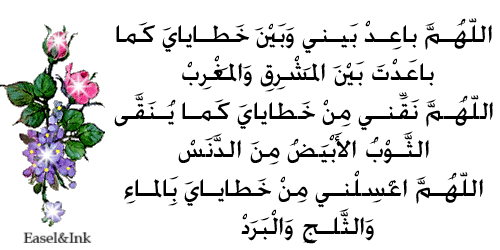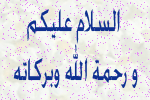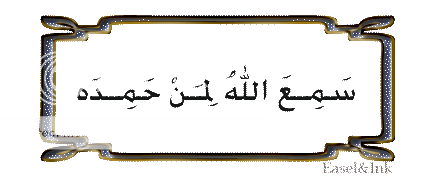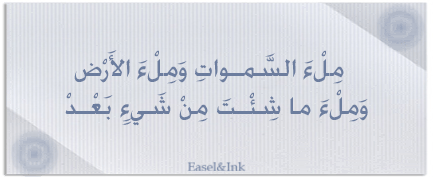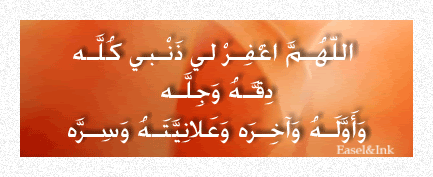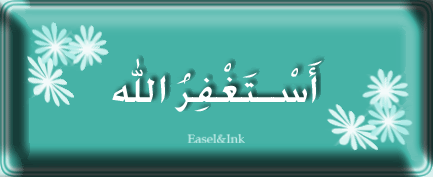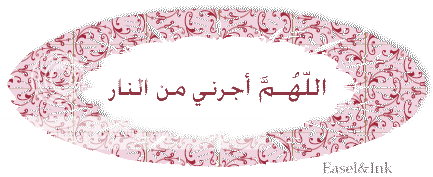
The Wonderful Library & Islamic Resource Center
World of Islamic Dawah: Islamic Library & Resource Center
|
|
| | Lesson Ten - The Sunan Elements of Prayer |  |
| | | Author | Message |
|---|
Zaza
Librarian

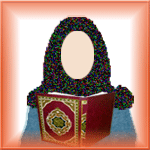
Location : The Wonderful Art Garden
 |  Subject: Lesson Ten - The Sunan Elements of Prayer Subject: Lesson Ten - The Sunan Elements of Prayer  Tue Mar 09, 2010 1:18 pm Tue Mar 09, 2010 1:18 pm | |
|  Lesson Ten Lesson Ten
The Sunan Elements of Prayer The following are the Sunan elements of prayer: 1) The opening supplication. 2) While standing, placing one's right hand on one's left, over the chest; before bowing and after rising from that position. 3) With joined and outstretched fingers, raising one's hands, so that they are parallel to his shoulders or to his ears, in the following situations: the opening Takbir, when going down to bow, when rising from the bowing position, and when rising from the first Tashahhud, Le., standing for the third unit of prayer. 4) Saying the statements of glorification more than once while bowing and prostrating. 5) What may be added to Rabbana wa Lakal-Hamd after standing from the bowing position, and supplicating for forgiveness more than once between the two prostrations. 6) To place the head at the same angle and level of one's back during the bowing position. 7) While prostrating, one should distance his upper arms from his, sides, his stomach from his thighs, and his thighs from his, calves. 8) Keeping the forearms away from the ground while prostrating. 9) During the first Tashahhud and between the two prostrations, one should place his buttocks on his left calf and foot, while his right foot should be erected, with his toes on the ground holding the foot up, and with the bottom of his foot facing the opposite direction of the Qiblah. 10) Specifically in the last Tashahhud of the three-unit and four- unit prayer, one should let his buttocks rest on the ground, while his left calf is resting under his right leg, once again resting the weight of the right foot on its toes, with the bottom of the foot facing away from the Qiblah. 11) Pointing one’s right index finger during both the first and last Tashahhud, from the time one sits until the time he finishes the Tashahhud; and in the same position, he should move that finger when he is supplicating. 12) During the first Tashahhud, sending blessings on the Prophet (Sallallahu Alayhi wa Sallam), his family, on Ibrahim (Alayhi Salam) and on his family. 13) To supplicate during the final Tashahhud. 14) Audible recitation during the Fajr prayer, the Jumu’ah prayer, the two Eid prayers, the prayer for rain, and in the first two units of the Maghrib and 'Isha' prayers. 15) Quiet recitation during the Dhuhr prayer, the 'Asr prayer, the third unit of the Maghrib prayer, and the last two units of the 'Isha' prayer. 16) Reciting more than Al-Fatihah during prayer. Just as one should follow those Sunan mentioned above, one should also follow those not mentioned among them: saying more than Rabbana wa Lakal-Hamd, for the Imam, his follower, and the one who is reading alone, for that is a Sunnah. Another example is to place one's hands on one's knees during the bowing position, with his fingers spread out. To continue Insha Allah | |
|   | | Zaza
Librarian


Location : The Wonderful Art Garden
 |  Subject: Re: Lesson Ten - The Sunan Elements of Prayer Subject: Re: Lesson Ten - The Sunan Elements of Prayer  Tue Mar 09, 2010 1:25 pm Tue Mar 09, 2010 1:25 pm | |
| The Sunan Elements of Prayer: The Sunan elements of prayer are divided into two categories: 1) sayings, 2) actions. It is not binding upon the worshipper to perform the Sunnah sayings or actions of prayer: if the worshipper performs them, he is rewarded; if he doesn't, then just as in all other deeds that are Sunnah, there is no sin upon him. Nonetheless, the Muslim should perform them, following the Prophet's command: Follow my Sunnah (way) and the Sunnah of the rightly-guided caliphs
- cling to that way by biting on it with your molars. The Opening Supplication: It is so called because with it, one begins the prayer. This is one of the opening supplications that has been related from the Prophet (Sallallahu 'Alayhi wa Sallam)  Subhanaka Allahumma wa Bihamdika wa Tabaarakasmu¬ka wa Ta'aalajadduka wa Laa Ilaaha Ghairuka. Subhanaka Allahumma wa Bihamdika wa Tabaarakasmu¬ka wa Ta'aalajadduka wa Laa Ilaaha Ghairuka. meaning: "Glory is to You, 0 Allah, and praise, Blesssed is Your Name and Exalted is Your Majesty, and none has the right to be worshipped except You." Phrase by Phrase Translation: Subhaanaka Allahumma: With your Sublimity, I consider You far too exalted to have any faults, 0 Allah. Wa Bihamdika: It has been said to mean that I join between two: I consider you free from having any faults and l praise You. Wa Tabaarakasmuka: Blessings are achieved by Your, remembrance. Wa Ta'aalajadduka: Your Exaltedness is Sublime. Wa Laa Ilaaha Ghairuka: There is no one on the earth or in the sky that is rightfully worshipped except You. Because there are different opening supplications that have been related from the Prophet (Sallallahu Alayhi wa Sallam) it is recommended for a Muslim to sometimes supplicate with one version and sometimes with another so that his adherence to the Sunnah is more complete. Another opening supplication that has been authentically related from the Prophet (Sallallahu Alayhi wa Sallam)
O Allah, distance me from my sins just as you have distanced the East from the West; 0 Allah, purify me of my sins as a white robe is purified of filth; 0 Allah, cleanse me of my sins with water, snow and ice pellets. (Recorded by Al-Bukhari and Muslim) To continue Insha Allah | |
|   | | Zaza
Librarian


Location : The Wonderful Art Garden
 |  Subject: Re: Lesson Ten - The Sunan Elements of Prayer Subject: Re: Lesson Ten - The Sunan Elements of Prayer  Tue Mar 09, 2010 1:31 pm Tue Mar 09, 2010 1:31 pm | |
| Placing one's right hand on one's left: In a Hadith related by Wa'il bin Hujr (Radhi Allahu Anhu), the Prophet (Sallallahu Alayhi wa Sallam) is described as having placed his right hand on his left hand. It was recorded by Ahmad and Muslim. And the Messenger of Allah (Sallallahu Alayhi wa Sallam) said: We, the Prophets, have been ordered to hasten to break our fast, and to delay our Suhur; and to place our right (hands) on our left (hands) in prayer. Recorded by Abu Dawud with a Hasan Mursal chain of narration from Tawus. It was also narrated from 'Ali (Radhi Allahu Anhu) with a chain of narration that contains some unreliable narrators. In it he said, "Indeed from the Sunnah in prayer is to place the hand over the hand under the navel." It was recorded by Ahmad and it mentions matters other than that, and the first narration is the more preferred. Allah knows best. With joined and outstretched fingers, raising one's hands The Prophet (Sallallahu Alayhi wa Sallam) used to raise his hands with his fingers stretched. (Recorded by Abu Dawud). In a Hadith related by Abu Humaid (Radhi Allahu Anhu), he says that the Prophet (Sallallahu Alayhi wa Sallam) used to raise his hands until they were parallel with his shoulders. (Agreed upon). Similar was recorded by Abu Dawud from Malik bin Al-Huwairith (Radhi Allahu Anhu), who said that the Prophet (Sallallahu Alayhi wa Sallam) would raise his hands until they were parallel to his earlobes. And by raising his hands, the Prophet (Sallallahu Alayhi wa Sallam) indicated raising the veil between him and his Lord, just as the index finger is used in the seated position to signify the Oneness of Allah. In the Hadith reported by 'Ali (Radhi Allahu Anhu) he said that when the Messenger of Allah (Sallallahu Alayhi wa Sallam) would stand up for an obligatory prayer, he would say, Allahu Akbar and raise his hands to the level of his shoulders; he would do the same when he finished his recitation, and he wanted to bow, and he would do that when he raised his head from bowing. He would not raise his hands in any portion of the prayer while he was sitting. And when he stood from the two prostrations, he would raise his hands with that Takbir. It was recorded by Ahmad, Abu Dawud, and At-Tirmidhi who said it is Sahib. The meaning of "the two prostrations" is the two units of prayer. more than once In the Hadith of Huthaifah (Radhi Allahu Anhu), he reported that when the Messenger of Allah (Sallallahu Alayhi wa Sallam) bowed, he would say: 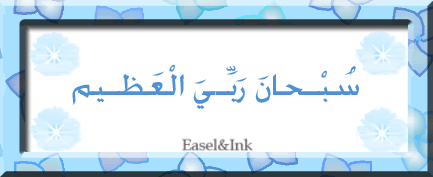 Subbana Rabbiyal-Azeem. Subbana Rabbiyal-Azeem. And when he would prostrate, he would say:  Subbana Rabbiyal-'Ala. Subbana Rabbiyal-'Ala. (Recorded by Abu Dawud) It is compulsory, then, to say them once; the least level of completeness is to say them three times; and the highest level of completeness is to say them ten times. and supplicating for forgiveness more than once: This is because it is compulsory to ask Allah for forgiveness once between the two prostrations: Huthaifah, (Radhi Allahu Anhu) related that between the two prostrations, the Prophet (Sallallahu Alayhi wa Sallam) would say: 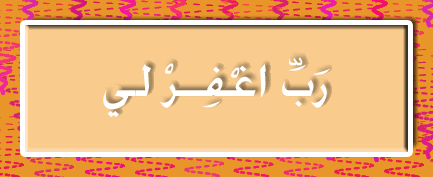 O my Lord, forgive me. (Recorded by An-Nasa'i and Ibn Majah). O my Lord, forgive me. (Recorded by An-Nasa'i and Ibn Majah). To continue Insha Allah | |
|   | | Zaza
Librarian


Location : The Wonderful Art Garden
 |  Subject: Re: Lesson Ten - The Sunan Elements of Prayer Subject: Re: Lesson Ten - The Sunan Elements of Prayer  Wed Mar 10, 2010 12:33 pm Wed Mar 10, 2010 12:33 pm | |
| To place the head at the same angle and level of one's back during the bowing position: 'Aishah (Radhi Allahu Anha) said that when he (Sallallahu Alayhi wa Sallam) would bow, he would neither point his head (down) nor hang it back, but would remain between the two. (This was recorded by Muslim) While prostrating, one should distance his upper arms from his sides ... and one should keep his forearms away from the ground: It has been related that, during prostration, the Prophet (Sallallahu Alayhi wa Sallam) would not let his arms lie down. (This was recorded by Al-Bukhari and Abu Dawud.) Rather, he would raise them above the ground and he would distance them from his two sides until the whiteness of his armpits could be seen from behind him. (Recorded by Al-Bukhari and Muslim) One should place his buttocks on his left calf and foot: When the Prophet (Sallallahu Alayhi wa Sallam) taught the person who prayed incorrectly, he (Sallallahu Alayhi wa Sallam) said: And when you sit down in the middle of the prayer, be serene, lay down your left thigh, and make the Tashahhud. [Recorded by Abu Dawud and Al-Baihaqi with a good (fayyid) chain of narration.] And 'Aishah (Radhi Allahu Anha) said that the Prophet (Sallallahu Alayhi wa Sallam) would lay down his left leg, and erect his right (foot). (Recorded by Muslim) "One should let his buttocks rest on the ground: As he was describing the prayer of the Prophet (Sallallahu Alayhi wa Sallam) Abu Humaid As-Sa'idi (Radhi Allahu Anhu) said: “When he (Sallallahu Alayhi wa Sallam) would sit for the last unit of prayer, he would put forward his left leg, erecting the other, and he would then rest his weight on his buttocks." (It was recorded by Al-Bukhari 2:828) And in the Hadith of Rifa'ah bin Rafi' (Radhi Allahu Anhu), recorded by Abu Dawud (no. 860) the Prophet (Sallallahu Alayhi wa Sallam) said: And when you sit in the middle of the prayer, be serene, let your left thigh rest, and then make Tashahhud. Sending blessings on the Prophet (Sallallahu Alayhi wa Sallam) : It is Sunnah for the one praying to send blessings upon the Prophet (Sallallahu Alayhi wa Sallam) just as he does in the last Tashahhud, for the Prophet (Sallallahu Alayhi wa Sallam) would send blessings on himself not only in the last Tashahhud, but in the first Tashahhud as well (and on other occasions as well). (This was recorded by Abu 'Awanah in his Sahih and An-Nasa' i) To supplicate during the final Tashahhud: As has been related in the Hadith: Then he may choose whatever supplication he wishes. (Recorded by Al-Bukhari) Earlier some supplications were mentioned for this position. See lesson number nine. Audible recitation: Imam Ibn Qudamah said, "There is a consensus among the Muslims that it is recommended to read out loud and to read quietly, each in their respective places. The basis for this is the practice of the Prophet (Sallallahu Alayhi wa Sallam) the knowledge of which has been transmitted from earlier to later generations." To continue Insha Allah
Last edited by Zaza on Wed Mar 10, 2010 3:47 pm; edited 1 time in total | |
|   | | Zaza
Librarian


Location : The Wonderful Art Garden
 |  Subject: Re: Lesson Ten - The Sunan Elements of Prayer Subject: Re: Lesson Ten - The Sunan Elements of Prayer  Wed Mar 10, 2010 1:48 pm Wed Mar 10, 2010 1:48 pm | |
| Reciting more than Al-Fatihah: Imam Ibn Qudamah said, "That it is Sunnah to recite a Surah after Al-Fatihah in the first two units of every prayer, and it is a practice about which we know no dissension." Another Sunnah is the Imam to say, "Allahu Akbar" out loud, for the Prophet (Sallallahu Alayhi wa Sallam) said: When the Imam says, "Allahu Akbar," then all of you should say "Allahu Akbar." He (Sallallahu Alayhi wa Sallam) also said: And when he says, "Sami' -Allahu Liman Hamidah" then all of you should say, "Rabbana wa Lakal-Hamd." However, the follower of the Imam and the one who is praying alone should say both of these phrases quietly. It is also Sunnah to quietly seek refuge in Allah from the accursed Shaitan:A'utbu Billahi Minash-Shaitaanir-Rajeem (I take refuge in Allah from the accursed Shaitan)." You may take refuge in Allah from the Shaitan using this invocation, or using any other that has been related from the Prophet (Sallallahu Alayhi wa Sallam). After seeking refuge from the Shaitan, you should quietly read Bismillah (i.e. Bismillahir-Rahmaanir-Raheem), even though Bismillah is neither from Surat Al-Fatihah nor from any other Surah; rather, it is a verse from the Qur'an that comes before and between Surahs of the Qur'an, except between Surahs Bara'ah and Al-Anfal. It is Sunnah to write Bismillah at the beginning of books and letters, just as Sulaiman (Alayhi Salam), did, and just as the Prophet (Sallallahu Alayhi wa Sallam) use to do. It repels the Shaitan, you should also read it before performing any actions. As you are reciting Surat Al-Fatihah it is recommended that you stop at the end of each verse (as opposed to reading the chapter through, without pausing, and without stopping, to take a breath after each of the verses.) After reading the last verse, and then after pausing slightly, you should say, "Aameen," which means, "0 Allah, answer." By pausing, you allow it to be known that the "Aameen" is not a part of the Qur'an. Both the Imam and his follower may say it after the audible prayers, and in the same prayers, based on Samurah's Hadith, it is recommended for the Imam to remain quiet after that. It is then recommended for the Imam to recite an entire chapter, and though reading one verse only is sufficient, Imam Ahmad preferred it to be long. And outside of the prayer, you may recite the Bismillah either out loud or quietly. The recitation in the Fajr prayer should be from the longer Mufassal section of the Qur'an, or the beginning of Surah Qaf since Aws asked the Companions of Muhammad (Sallallahu Alayhi wa Sallam) about how the Qur'an was divided and they said, "A third, a fifth, a seventh, a ninth, an eleventh, a thirteenth - and the Mufassal section as one." The recitation in the Maghrib prayer should be from the shorter $urahs and in the remainder of the prayers from those of moderate length as long as there is no reason to prevent that. Otherwise, recitation should be from the shorter Surahs. For the loud prayers, a woman may recite out loud as long as no strange man can hear her. When you pray voluntary prayers late at night, you must consider the general good: if someone is nearby who will be disturbed by your recitation, then you should recite quietly; if the one who is nearby would like to listen, then you may recite out loud. If, by mistake, you recite out loud when you should have recited quietly or, recited quietly when you should have recited out loud, then you can correct yourself by simply changing the volume of your voice to what is appropriate, continuing in your recitation, without beginning all over. And finally, because the verses of the Qur'an are in a particular order, you must recite them in order. To continue Insha Allah | |
|   | | Zaza
Librarian


Location : The Wonderful Art Garden
 |  Subject: Re: Lesson Ten - The Sunan Elements of Prayer Subject: Re: Lesson Ten - The Sunan Elements of Prayer  Thu Mar 11, 2010 12:20 pm Thu Mar 11, 2010 12:20 pm | |
| Saying the statements of glorification more than once: The scholars say that, in terms of the Imam, he may reach the lowest level of completeness by reading those phrases three times and the highest level of completeness by reading them ten times. Also, you should know that the Prophet (Sallallahu Alayhi wa Sallam) forbade us from reciting the Qur'an during both the bowing and the prostrating positions. What may be added to Rabbana-walakal-Hamd: For example, saying: The heavens and the earth and all between them abound with Your praises, and all that You will abound with Your praises. If one likes, one may add: O Possessor of Praise and Majesty, the truest thing a servant has said (of You) and we are all Your servants. 0 Allah, none can prevent what You have willed to bestow and none can bestow what You have willed to prevent, and no wealth or majesty can benefit anyone, as from You is all wealth and majesty. You may say any other phrase that has been related from the Prophet (Sallallahu Alayhi wa Sallam) such as the one in Abu Sa'id's (Radhi Allahu Anhu) Hadith: 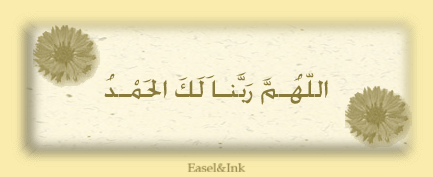 Allahumma Rabbana Lakal-Hamd. Allahumma Rabbana Lakal-Hamd. A slight variation, which means, "0 Allah, Our Lord, for You is all praise." It is also recommended, when you go down for prostration, that your hands touch the ground directly, with your fingers joined together, pointed in the direction of the Qiblah. In that position, your fists should not be clenched, nor should your elbows be resting on the ground; rather, they should be raised. And supplicating for forgiveness more than once: Not only may you ask for forgiveness more than once, you may also read an additional supplication: ibn 'Abbas (Radhi Allahu Anhuma), said that the Prophet (Sallallahu Alayhi wa Sallam) would say the following between the two prostrations: My Lord forgive me, have mercy upon me, guide me, give me sustenance, and give me health. (Recorded by Abu Dawud) You may make the same supplication when you are prostrating, for the Prophet (Sallallahu Alayhi wa Sallam) said: As for the prostration, when you are in that position, supplicate much - and it will be worthy for you to be answered. (Recorded by Muslim) Abu Hurairah (Radhi Allahu Anhu) related that the Messenger of Allah (Sallallahu Alayhi wa Sallam) would say when he was prostrating: O Allah, forgive me all of my sins, the small and great of them, the first and last of them, and the seen and hidden of them. Shaikh Muhammad bin 'Abdul-Wahhab said, "Then he (Sallallahu Alayhi wa Sallam) should sit for the Tashahhud, with his hands on his legs, stretching and joining the fingers of his left hand, so that they are facing the Qiblah. As for his right hand, his pinky finger (little finger) and the one next to it should be clenched, while thumb and middle finger should touch, making the shape of a ring. Then he should make Tashahhud, pointing with his index finger, signifying Tawhid. He may point with that finger when supplicating either during prayer or outside of prayer, for Ibn Zubair (Radhi Allahu Anhu) said, 'The Prophet (Sallallahu Alayhi wa Sallam) would point with his finger when he supplicated, and he wouldn't move it.'" (It was recorded by Abu Dawud) It is also Sunnah to turn towards your right and left when making Taslim (i.e. saying As-Salamu 'Alaikum wa Rahmatullah): The Imam says the Taslim out loud, and his followers should say it quietly. While he shouldn't prolong his voice when he says the Taslim, he should make intention first to exit the prayer and second to send peace on the protecting angels and on those who are present. After making Taslim, the Imam should not prolong facing the Qiblah: rather, it is Sunnah for him to turn toward those who followed him in prayer, either turning to his right or to his left. And no follower should leave the place of prayer before him, for the Prophet (Sallallahu Alayhi wa Sallam) said: I am your Imam, so do not precede me - neither in the bowing position, nor in the prostrating position, nor in leaving. If women are praying with men, the women should leave first, while the men wait for a short while, so that they don't accost the women or get in their way. To continue Insha Allah | |
|   | | Zaza
Librarian


Location : The Wonderful Art Garden
 |  Subject: Re: Lesson Ten - The Sunan Elements of Prayer Subject: Re: Lesson Ten - The Sunan Elements of Prayer  Thu Mar 11, 2010 12:27 pm Thu Mar 11, 2010 12:27 pm | |
| After the prayer is finished, it is Sunnah for you to remember Allah, to invoke Him, and to ask His forgiveness, saying, Astaghfirullah (I ask Allah for forgiveness) three times. Then you should say: "Allalhumma Antas-Salaamu wa Minkas-Salaamu, Tabaarakta Yaa Thal-]alaali wal-Ikraam. Laa Ilaha Illallilhu Wahdahu Laa Share¬eka Lahu. Lahul-Mulku wa Lahul-Hamdu wa Huwa 'Ala Kulli Shay'in Qadeer. Wa Laa Hawla wa Laa Quwwata Illa Billah. Laa Ilaha Illallahu wa Laa Na'budu Illa Iyyaahu. Lahun-Ni'matu wa Lahul-Fadhlu wa Lahuth-Thana'ul-Hasan. Laa Ilaha Illallalhu Mukhliseena Lahud-Deena wa Law Karihal-Kaafiroon. Allahumma La Maani'a Limaa A'taita, wa Laa Mu 'tiya Limaa Mana'ta, wa Laa Yanfa'u Thal-]addi Minkal-]add." 0 Allah, You are As-Salaam (The One Who is free from all defects) and from You is all peace, Blessed are You, 0 Possessor of Majesty and Honor. None has the right to be worshipped except Allah, alone, without partner, to Him belongs all sovereignty and praise, and He is capable over all things. And there is no power nor ability except by Allah. None has the right to be worshipped except Allah, and we do not worship any other besides Him. His is grace, and His is bounty and to Him belongs the most excellent praise. None has the right to be worshipped but Allah. (We are) sincere in making our religious devotion to Him, even though the disbelievers may dislike it. 0 Allah, none can prevent what You have willed to bestow and none can bestow what You have willed to prevent, and no wealth or majesty can benefit anyone, as from You is all wealth and majesty. Then you should say, Subhaanallah (How perfect Allah is!) thirty-three times. Al-Hamdulillah (All praise is for Allah)" thirty-three, times, and: Allahu Akbar (Allah is the Most Great)" thirty-three times. To complete the hundred, say: Laa Ilaha Illallah wahdahu la shareeka lahu. Lahul-Mulku, wa Lahul l¬Hamdu, wa Huwa 'Ala Kulli Shay'in Qadeer. (None has the right to be worshipped except Allah, alone, without partner, to Him belongs all sovereignty and praise and He is Capable over all things)." After having finished the Fajr and Maghrib prayers, and before speaking to any person, say: Allahummajurnee Minan-Naar (0 Allah, protect me from the fire), seven times. Know that to supplicate quietly is better than to supplicate out loud, and moreover, you should supplicate with what is narrated from the Prophet (Sallallahu Alayhi wa Sallam) and with a present heart, both hoping and fearing, for the Prophet (Sallallahu Alayhi wa Sallam) said: The supplication of a heedless heart is not answered. Ask Allah Almighty by His Beautiful Names and Attributes, and ask Him, mentioning your belief in Tawhid. When you supplicate, try supplicating during those times when you are more likely to be answered: the last third of the night, between the Adhan (call to prayer) and the Iqamah, after the obligatory prayers, the last hour of (daylight on) Friday and between the Adhan and Iqamah during the Friday prayer. You should patiently wait for your supplication to be answered, not rushing, and not saying, "I supplicated and 1 supplicated but 1 was not answered." And it is okay to specify yourself when you supplicate, but it is disliked to do so when others are saying Aameen after you. And it is also disliked to supplicate out loud. To continue Insha Allah | |
|   | | Zaza
Librarian


Location : The Wonderful Art Garden
 |  Subject: Re: Lesson Ten - The Sunan Elements of Prayer Subject: Re: Lesson Ten - The Sunan Elements of Prayer  Thu Mar 11, 2010 12:37 pm Thu Mar 11, 2010 12:37 pm | |
| You should know that the Shaikh mentioned only some of the Sunnah elements of prayer, whereas there are more, and as I mentioned earlier, the people of knowledge classify those elements into sayings and deeds. There are seventeen sayings in prayer that are Sunnah: 1) The Opening Supplication. 2) Seeking refuge in Allah from the Shaitan. 3) The Basmalah. 4) Saying "Aameen" after the Opening Chapter. 5-9) Reciting a Surah of the Qur'an in the first two units, and in the Fajr, Jumu’ah, voluntary, and two 'Eid prayers. 10-11) Reciting out loud when required; reciting quietly when required. 12) After standing from bowing, reading, "Mil'as-Samawaati wal¬Ardh ... " to the end of that supplication 13-14) Saying the statements of glorification more than once when bowing and when prostrating. 15) Between the two prostrations, asking Allah for forgiveness more than once. 16) In the last Tashahhud, seeking refuge in Allah from four trials. 17) In the first Tashahhud, sending prayers and blessings on Muhammad (Sallallahu Alayhi wa Sallam) and his family. All other Sunnah elements of the prayer are actions, such as the following: 1) Raising the hands with the fingers being stretched and joined and (palms) facing the Qiblah when beginning the prayer, when going down to the bowing position, and when rising from that position. Also, lowering the hands after raising them. 2) Placing the right hand on the left wrist, and putting them under the navel. (*) 3) Looking at the place of prostration. 4) Separating one's feet at a comfortable distance during the standing position. 5) Reciting in a metered pace (Tarteel). 6) That the Imam's recitation in the first unit is longer than in the second, and the length of his recitation should correspond to the condition of his followers. 7) Holding one's knees during the bowing position, with the fingers stretched open. 8) During the bowing position, making one's back straight; also, in the same position, one's head should be parallel to one's back. 9) When going down for prostration, one's knees should touch the ground before one's hands. 10) When rising from the prostrating position, one's hands should precede one's knees in being lifted. 11) While prostrating, placing one's forehead and nose firmly on the ground, while one's arms are spread away from one's sides; one's stomach should be away from one's thighs and one's thighs should be away from one's calves. 12) During prostration, one's feet should be erected, with the tips of the toes separated and touching the ground. 13) During prostration, one's hands should be parallel to one's shoulders; also, one's fingers should be stretched, joined, and facing the Qiblah. 14) One's hands should directly touch the place of prostration. 15) Standing to the next unit of prayer on the soles of the feet putting the hands on the thighs for support. 16) Sitting on the left foot with the right foot erect between the two prostrations and in Tashahhud. 17) Sitting on the buttocks (as described earlier) in the last Tashahhud. 18) Turning to one's right and left when making Taslim. 19) Putting his hands on his thighs with the fingers extended and together and the index finger pointing toward the Qiblah between the two prostrations and in Tashahhud. 20) During the Tashahhud, to clench one's pinky finger and the one next to it from one's right hand, to make the shape of a ring with the thumb and middle finger, and to point with the index finger. 21) Giving preference to turning away from the Qiblah from the left rather than the right. Publisher's Note: The Hadith from which this act is mentioned is weak.
Please check the book Nailul-Awtaar, Volume 2, pages 207-211. To continue Insha Allah | |
|   | | Zaza
Librarian


Location : The Wonderful Art Garden
 |  Subject: Re: Lesson Ten - The Sunan Elements of Prayer Subject: Re: Lesson Ten - The Sunan Elements of Prayer  Thu Mar 11, 2010 1:36 pm Thu Mar 11, 2010 1:36 pm | |
| Sajdah As-Sahw: The Prostration for Forgetfulness Imam Ahmad said that, from the narrations we have, the Prophet (Sallallahu Alayhi wa Sallam) made this special prostration five times: 1) When he ended the prayer after two units. 2) When he ended the prayer after three units. 3) When he did an extra action during prayer. 4) When he missed one of the actions of prayer. 5) When he stood after two units without making prostration. Al-Khattabi said, "What is trusted among the scholars are these five Ahadith," referring to two related by Ibn Mas'ud one related by Abu Sa'id, one by Abu Hurairah, and one by Ibn Buhainah (Radhi Allahu Anhum) One makes this prostration when one performs extra units or too few units, when one is doubtful during a compulsory prayer or a voluntary prayer, except if these things happen often: when they do, they are most probably whispers from the devil, and they should be disregarded, a ruling that applies to ablution, taking a shower, and removing impurities. When one performs the actions of prayer more times than is prescribed on purpose, such as standing, bowing, or sitting, then that prayer is void; but if one does it by mistake, then he may perform the prostration for forgetfulness. The Prophet (Sallallahu Alayhi wa Sallam) said: If a man increases or decreases from his prayer, let him make two prostrations.
(Recorded by Muslim) If one forgets, but then remembers, he should return to the proper order of prayer without saying "Allahu Akbar." If one prays an additional unit, one should stop as soon as one remembers and base his prayer on those actions he performed before doing what was additional. Whether one is an Imam or someone who is praying alone, one must return to a previous position when two trustworthy people prompt him to do so; if only one person prompts him to return, he does not have to do so unless he is sure that that person is right. The Prophet (Sallallahu Alayhi wa Sallam) did not return when Thul-Yadain told him to do so. Small or few physical actions do not render one's prayer void, for the Prophet (Sallallahu Alayhi wa Sallam) opened a door for 'Aishah while he was praying; on another occasion, he carried Umamah while he was praying. If one says one of the phrases of prayer, not in its place, but during another part of prayer, one's prayer is not rendered void. When one forgets during prayer, one must prostrate twice, for the Prophet (Sallallahu Alayhi wa Sallam) said: If one of you forgets, let him make two prostrations. If one says the Taslim on purpose before the prayer actually ends, it becomes void; but if he said the Taslim by mistake, and then during a short period of time, he remembered, he can simply complete his prayer, even if he exited from the Masjid or spoke briefly for some benefit. If one speaks by mistake, sleeps, or if he speaks a word that slips out (i.e., a word that is not from the Qur'an) accidentally during recitation, his prayer is not rendered void. But if one laughs, then his prayer is nullified, a ruling that has Ijma ' (consensus) behind it; but one's prayer is not nullified by merely smiling. If one forgets one of the pillars of prayer (other than the opening Takbir) while he is reciting for the next unit, then the unit in which he forgot the pillar becomes nullified and the new unit replaces it. In such a situation, the opening supplication is not repeated, an opinion that is held by Ahmad. If one remembers that he missed a pillar before reciting, then he should return and repeat it and what comes after it. When one forgets the first Tashahhud by standing after the prostrations of the second unit, he must return to the Tashahhud unless he has reached the standing position and stands erect. This was recorded by Abu Dawud. The follower must follow the Imam; he does not have to do the Tashahhud but he does have to make prostration. When one is not sure how many units he prayed, he should base the number on what he is sure of, and when the follower doubts, he should just continue to follow the Imam. If a follower joins the prayer when the Imam is bowing, and he is not sure whether he reached the prayer on time, he should disregard that unit and repeat it. The follower does not have to prostrate for forgetfulness unless his Imam has to do so, and he does it with him. Actions That Are Disliked During The Prayer1) To turn one's head slightly or to raise it to the sky is disliked. 2) To pray toward a picture, fire, or lamp. 3) Resting one's elbows on the ground during prostration. 4) To pray when one has to relieve himself. 5) To pray when food one desires is served; in this situation, one should delay the prayer even if one misses the congregation. 6) To play with pebbles or to intertwine the fingers of his two hands. 7) To rest on one's hand during the seated position. 8) To touch one's beard. 9) If one has to yawn, one should hold it back as much as possible; if he cannot control himself, he should simply put his hand on his mouth. 10) To level the dirt on the ground without an excuse. 11) When one passes in front of you while you are praying, don't let him pass; hold him back, and if need be, push him back, whether the one trying to pass is a human or an animal, whether the prayer is compulsory or voluntary. If the one trying to pass by refuses to desist, you may even fight him. It is forbidden to walk between one who is praying and his Sutrah (an object he places before him, so that people may walk by him after that object, and not before it). It is also forbidden to walk right in front of him even if he doesn't have a Sutrah. 12) During prayer, one may kill a snake, scorpion, or louse. One may even straighten out his garment or turban. 13) It is not disliked to give greetings of peace to one who is praying, but he may return your greeting by gesture. 14) When the Imam makes an error, you may correct him; men should say 'Subhaanallah' to point out his mistake and women should clap. 15) While in the Masjid, if one has to spit, one should do so in his garment; outside of the Masjid, he should do so on his left; it is hated to spit to one's right or straight ahead. 16) It is disliked for one who is praying individually not to have a Sutrah, even if one does not fear a passerby. One may use a wall, a stick, or something else that is readily available. One should pray close to one's Sutrah, for the Prophet (Sallallahu Alayhi wa Sallam) said: When one of you prays, he should pray toward a Sutrah and he should get close to it. He should turn slightly so as not to face it directly, since the Prophet (Sallallahu Alayhi wa Sallam) did that, and if there is a need he may just make a line and if anything passes beyond it then it is not disliked. | |
|   | | Sponsored content
 |  Subject: Re: Lesson Ten - The Sunan Elements of Prayer Subject: Re: Lesson Ten - The Sunan Elements of Prayer  | |
| |
|   | | | | Lesson Ten - The Sunan Elements of Prayer |  |
|
Similar topics |  |
|
| | Permissions in this forum: | You cannot reply to topics in this forum
| |
| |
| |
|









 Please check our
Please check our 







